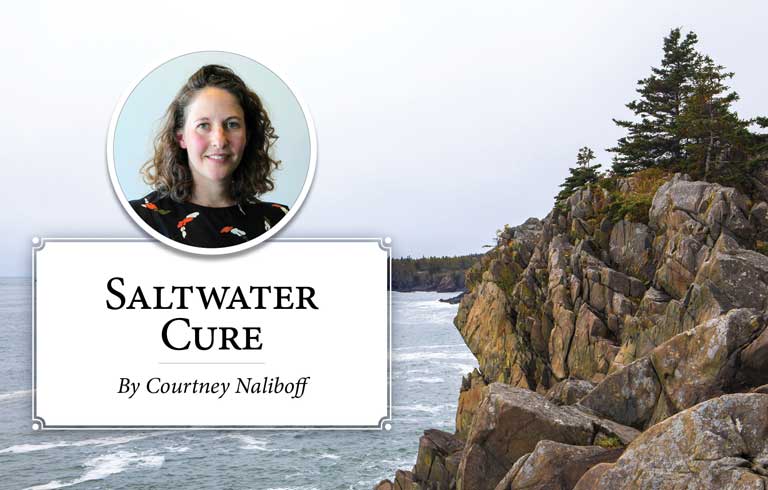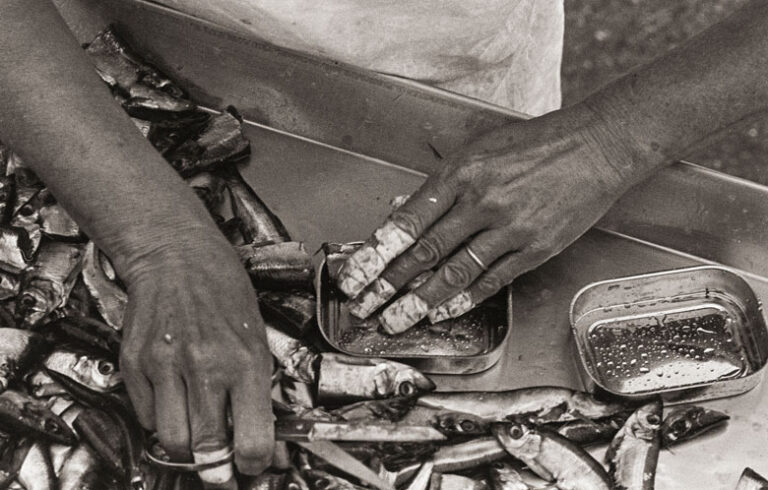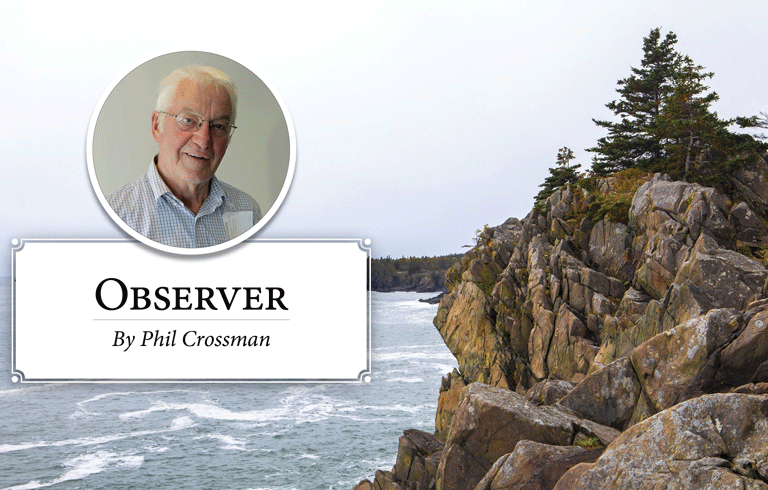The ocean is knocking at our door.
Since the torrential, monsoon-like rain in October, the island has been battered by four additional significant storms. In January, a devastating combination of wind and tide laid waste to Brown’s Boatyard, and took out boathouses, fish houses, docks, and piers. The next storm hit three days later.
The wind and water have always been present, always reminding us of their destructive power, but through a combination of luck and privilege I haven’t experienced that as an existential crisis until recently.
The seaweed still scattered throughout the sailing club walkway and festooning the trees along the Thorofare, the high-water marks on the buildings, the “Pay Inside” sign on the gas pump—the ocean knocked at the door and reminded us that it’s not really our house.
The ocean knocked at the door and reminded us that it’s not really our house.
A potent reminder of the island’s ancient coexistence with the ocean was carved open in the storm—the shell midden at Turner Farm beach. Since the January storms it’s been bleeding spear points, arrowheads, and other artifacts. See what our relationship used to be like?, the ocean says.
Everybody agrees this is unprecedented, everybody agrees that we want to keep living here, everybody agrees that we need to do something—but what is there to do?
An engineering firm, contracted by the town to start considering what changes can be made to the Thorofare waterfront, held a public meeting at the market a few weeks ago. I walked in to buy groceries and overheard an attendee ask, with a note of desperation, “But what will we do with the water?”
That morning, with not a breath of wind or drop of rain, an astronomical high tide filled the Brown’s lot almost up to the road once again. I had been one of a parade of cars who had driven down hoping to get gas, only to pull out quickly upon realizing the lot was under water. I checked my tide app before making a second attempt. That was a first—maybe not a last.
So what will we do with the water? Can we raise ourselves up high enough, make our structures strong enough, pump it out fast enough? Change our routines, our expectations, our relationship with the ocean? Will it let us remain its tenants, or evict us and decorate its properties with rockweed welcome mats for the new residents?
Courtney Naliboff teaches writing, theater, and music on North Haven and plays in the band Bait Bag. She may be contacted at Courtney.Naliboff@gmail.com.





